
Hello boys and girls.
Today’s article is brought to you by the letter C.

Can you guess what the C-word is?

That’s right! The C-word of the day is COLLOCATIONS!
Can you tell Elmo what collocations are?
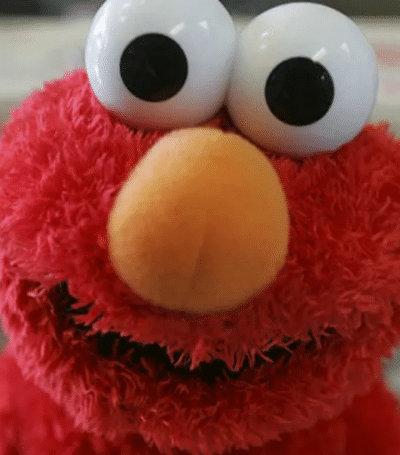
That’s right! Collocations are the habitual juxtaposition of a particular word with another word or words with a frequency greater than chance!
Wow! You’re so smart! Elmo is impressed!

Okay enough of THAT.
Simply put, collocations are groups of words that are commonly used together. Kind of like clichés or idioms. (The internet likes to say collocations are different from clichés and idioms, but diving down that rabbit hole gets confusing FAST, so we’re going to keep it simple and consider them the same thing.)
Collocation examples are phrases like:
- Happily married
- Have a drink
- Make a difference
- Take a seat
- The grass is always greener on the other side
- Piece of cake
- Happy birthday
- Someone woke up on the wrong side of the bed
- A case of the Mondays
- Break a leg
- Time flies when you’re having fun
…You get the idea.
Commonly used phrases, that are normally boring conversation fillers, present an opportunity to get attention. You just had to add a twist to the end.
Why don’t I just show you what I mean.
Elmo loves nursery rhymes. So Elmo’s first example comes from standup Andrew Dice Clay. He takes nursery rhymes and adds a twist to make them new and surprising.
This technique was fire for Dice. Notice how the audience goes wild for them, and even MEMORIZED them. (And if you’ve never seen Dice before, aren’t you in for a treat.)
An attention-grabbing technique is to take a common phrase, colloquialism, idiom, collocation, etc and change the ending to something unanticipated. This raises awareness, because it sets up an expectation, then shatters the pattern.
Your brain is an expert at pattern recognition. When your meat-computer senses a pattern it’s familiar with, it can safely ignore that pattern.
If you were to shatter that pattern, your brain snaps into focus. It better pay attention, because thousands of years ago when we were living in caves and dragging our knuckles on the ground, new things were potentially dangerous.
Caveat: Clichés are only attention-worthy if they are NOT used traditionally.
The only appropriate time to use a cliché is if you are either making fun of it, or putting your own twist on it.
Clichés are overused by definition. Our brains have seen them all before, so we are conditioned to ignore them. They are benign. We know that pattern.
But if you shatter that pattern, then you are more worthy of attention.
A killer way to shatter patterns is with one-liner jokes. This technique is highly effective at catching and holding people’s attention. And they are DIFFICULT to get right.
One-liners follow a simple formula:
#1. Setup
#2. Punchline (The twist)
Looks easy on paper. But it’s not. It’s HARD. There’s a whole lot happening between #1 and #2.
The Setup:
One-liners are so effective at misleading us because the setup and the twist happen incredibly fast like a one-two punch. The setup is designed to lure us into a false sense of security; we think we know where they’re going.
One liners can start with an observation, statistic, fact, universal truth, piece of advice, opinion, or a short story.
Let’s look at a few examples. The setups are in bold, the twists are in italics.
Universal truth one liner:
Life is like a box of chocolates. It doesn’t last long if you’re fat. – Joe Lycett
Exercise:
Some good examples of universal truths are proverbs.
Try Googling the most famous proverbs and come up with your own twist or angle. How could you give the proverb a second, unintentional meaning?
“An apple a day keeps the doctor away.” How else can you interpret this? What other ways would an apple keep a doctor away? Do you throw it at them? Shove it in their car tailpipe? Is an apple a day the only healthcare plan you can afford?
Here’s a list of 50 proverbs to get you started. Pick a couple and try giving them alternate interpretations.
Statistic one liner:
Eighty percent of married men cheat in America. The rest cheat in Europe. – Jackie Mason
Exercise:
This blueprint is easy to practice. Replace the stat with another stat, and add a twist to it.
[# or %] of [statistic.] The rest [insert twist.] – You
Other exercise:
Skim some headlines in the news.
Ask yourself, what is this headline leading me to assume?
Then list alternative interpretations of that headline.
Watch late night monologues; their jokes use this structure.
Opinion one liner:
I don’t like country music, but I don’t mean to denigrate those who do. And for the people who like country music, ‘denigrate’ means ‘put down.’ – Bob Newhart
I wish people would stop making fun of fat people. They have enough on their plates. – Eddie Murphy
Exercise:
Notice how Bob and Eddie put a twist on the end of their opinions, which turns out to be the opposite of what we thought they meant. We thought Bob wasn’t going to “denigrate” country music lovers. We thought Eddie wasn’t going to make fun of fat people. Their twists prove just the opposite.
What opinions can you think of that everyone generally agrees on, and how can you add a twist that either negates that opinion or highlights it from a weird angle that people wouldn’t expect?
Piece of advice one liner:
Ladies: Don’t come off desperate and reply quickly to your crushes texts. Wait a while. Meet someone else. Get married. Start a family. Keep him guessing. – Violet K. Benson
Exercise:
What pieces of advice have you heard, and how can you turn them around? A lot of common life advice can also be found in proverbs. But there’s also tons of common advice out there about life, personal development, dating, fitness, finance, work, parenting, etc. How could you “misinterpret” that advice to give it a different context?
Short story one liner:
I was on a date with this really hot model. Well, it wasn’t really a date-date. We just ate dinner and saw a movie. Then the plane landed. – Dave Attell
Exercise:
First we thought Dave was telling us a story about going to dinner and a movie with a model. The twist, in four simple words, completely changes the entire context for us. He’s just another chud on a plane.
What experiences can you think of that most people would love to encounter? Like winning the lottery, staying at an all-inclusive resort, flying first class, going on a date with a model, getting VIP access, etc. Feed ‘em a dream, then bring them back down to earth.
Jack Handey had a good example: “One thing kids like is to be tricked. For instance, I was going to take my little nephew to Disneyland, but instead I drove him to an old burned-out warehouse. “Oh, no,” I said. “Disneyland burned down.” He cried and cried, but I think that deep down, he thought it was a pretty good joke.
The Punchline:
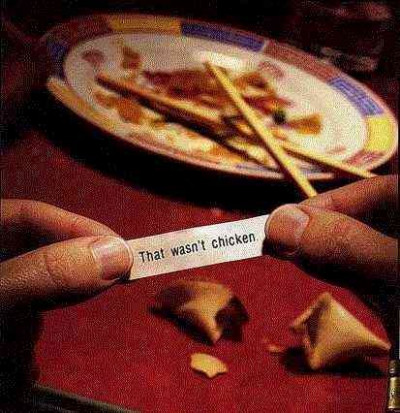
The twist completes the story for us, but not in the way we were expecting. It crushes the assumption created by the setup.
Dave Barry has a ton of great one liners. It helps to read one liners to get familiar with the rhythm of how they’re supposed to feel.
Another way of getting the hang of one-liners is watching them.
These standup comics are considered one-liner royalty:
(Remember as you’re watching these, you’re not wasting time, you’re STUDYING. You’re not goofing off, you’re working. So get to work watching these.)
- Stewart Francis
- Stephen Wright
- Gary Delaney
- Wendy Liebman
- Emo Phillips
- Mitch Hedberg
- And of course, Rodney Dangerfield, Anthony Jeselnik, Jimmy Carr, and others.
Exercise #1: Watch each video all the way through, then go back and watch it again. But the second time, pause after each joke and analyze where the expectation was set up, and how it was shattered.
Using the same premise, try adding your own twist. Isolate the verbs, nouns, and adjectives, then substitute them with alternatives. This helps preserve the joke structure, while practicing at making it your own. Shatter the pattern in a new and different way.
Exercise #2: Which jokes made you laugh the hardest? (If any? Maybe you didn’t laugh. If you didn’t find any of that funny, I left an apology for you at the bottom.) What was it about them that hit you so hard? Was it the grammar, tone, pronunciation, word choice? Was it something physical, in their facial expressions or movement? Make note.
How Brands Use One Liners:
“But Asia, we is not comedians! We is businesses!”
Oh stop it. You don’t have to be a comedian, but you definitely should be paying attention to comedians. They’re a masterclass in how to distill information into highly memorable stories.
If you’re still wondering how to incorporate one liners into your marketing, here’s a few examples of brands that have nailed it:
Durex:

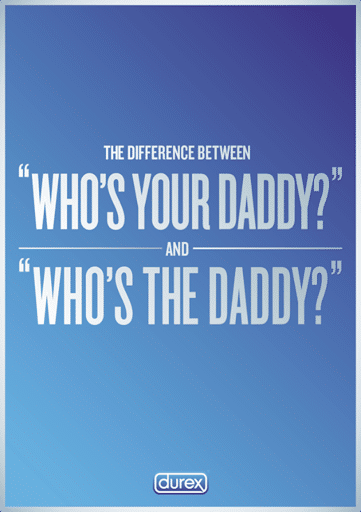

I know, using Durex as an example is like cheating. It’s almost impossible NOT to make jokes about a condom brand. So here’s some other, more traditionally “boring” brands that made themselves exciting using witty wordplay and one liners:
The country of freaking Finland:

Scrabble:

Electrolux:
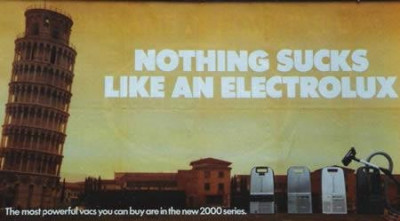
Even Porsche got jokes:
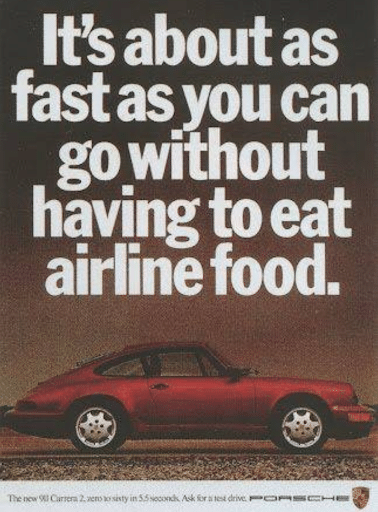
This Highlighter Company:
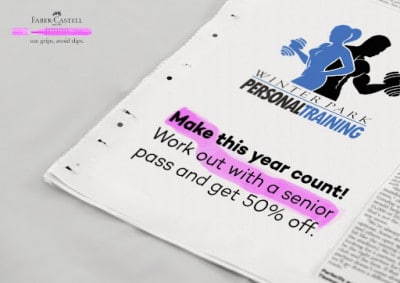

If a little autoparts shop can do it, so can you:

Daihatsu:
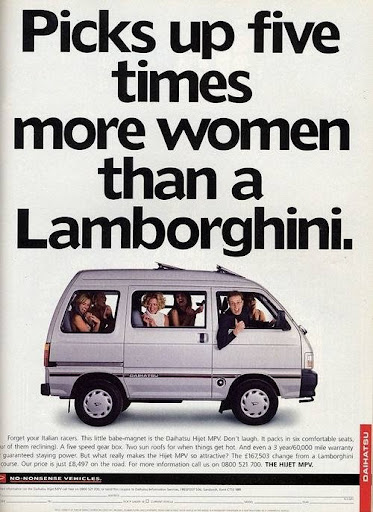
Your local gym:
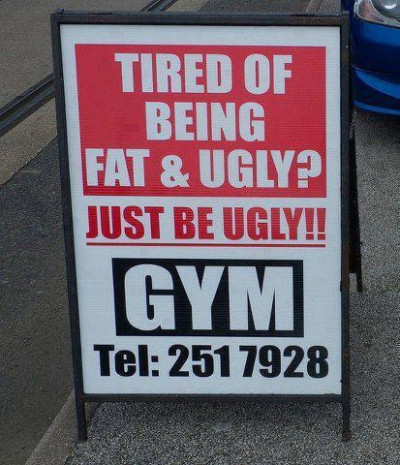
Air Asia knows what’s up:

The Economist’s White Out of Red campaign:
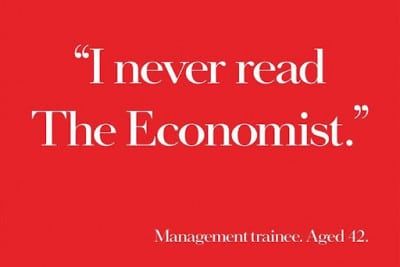


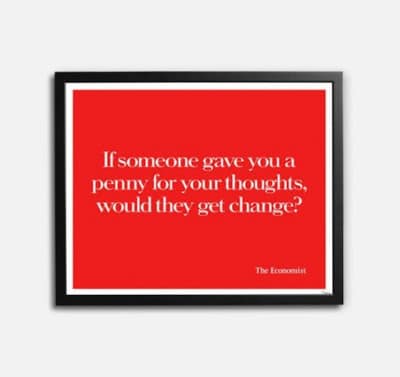
The Economist’s white out of red campaign increased subscriptions by 95%, skyrocketed revenues, and won them numerous awards over the 14 years they ran it.
Their circulation rose from 86,000 in 1988 to 141,000 in 2001, at a time when newspapers and magazines had declined by 20% over the past 15 years.
All with witty wordplay and one liners.
If companies that sell freaking HIGHLIGHTERS can make their ads entertaining, you can too. You just have to put some muscle into it.
…or you could let us do the heavy lifting. It’s what we were born to do.
- Want your ads to get noticed? Deny a common truth. - February 27, 2025
- Putting Funny Ads To Work For Your Boring-Ass Business – Pattern Interrupt - February 10, 2022
- Putting Funny Ads To Work For Your Boring-Ass Business – Ordinary to Extraordinary - November 30, 2021
